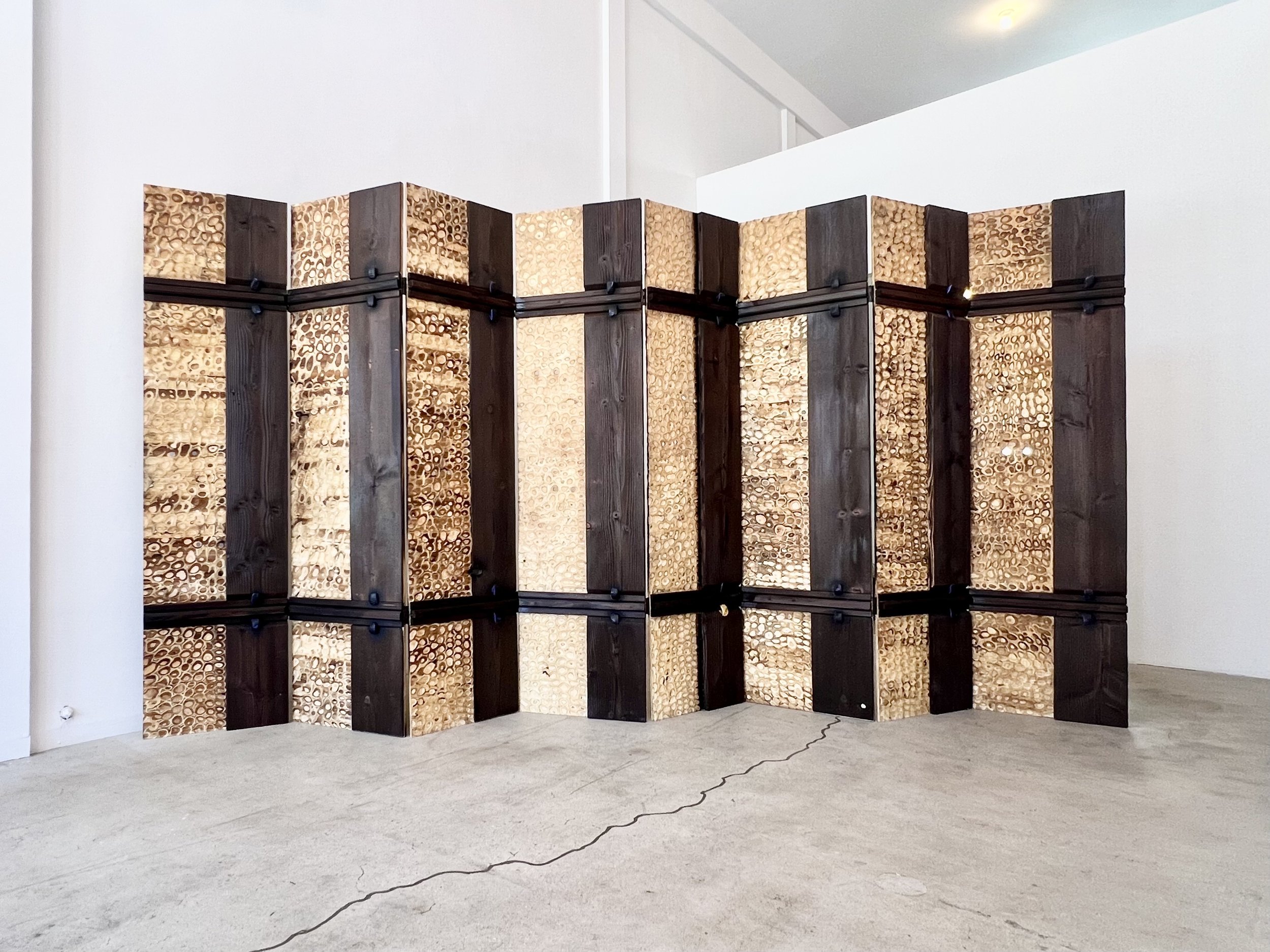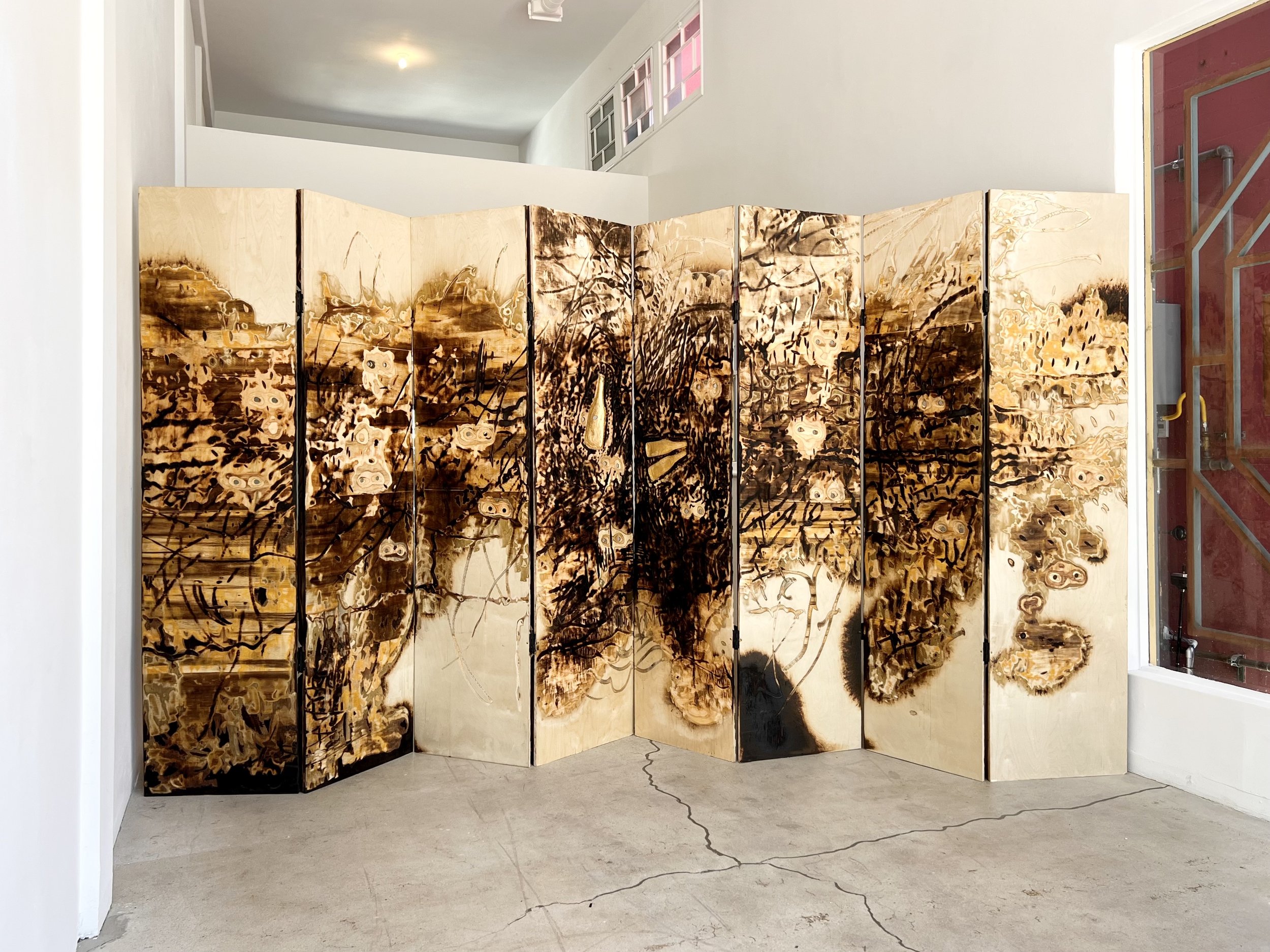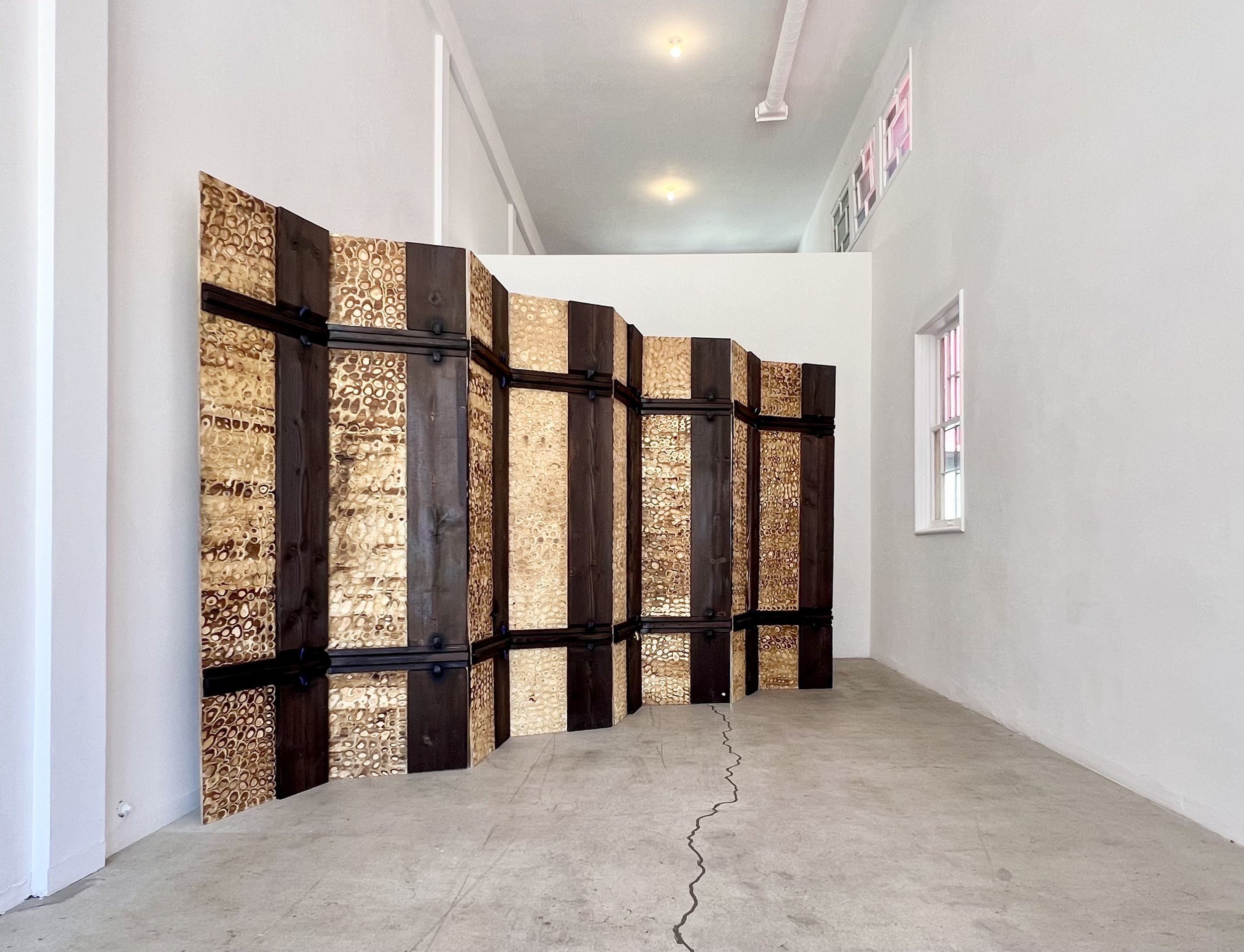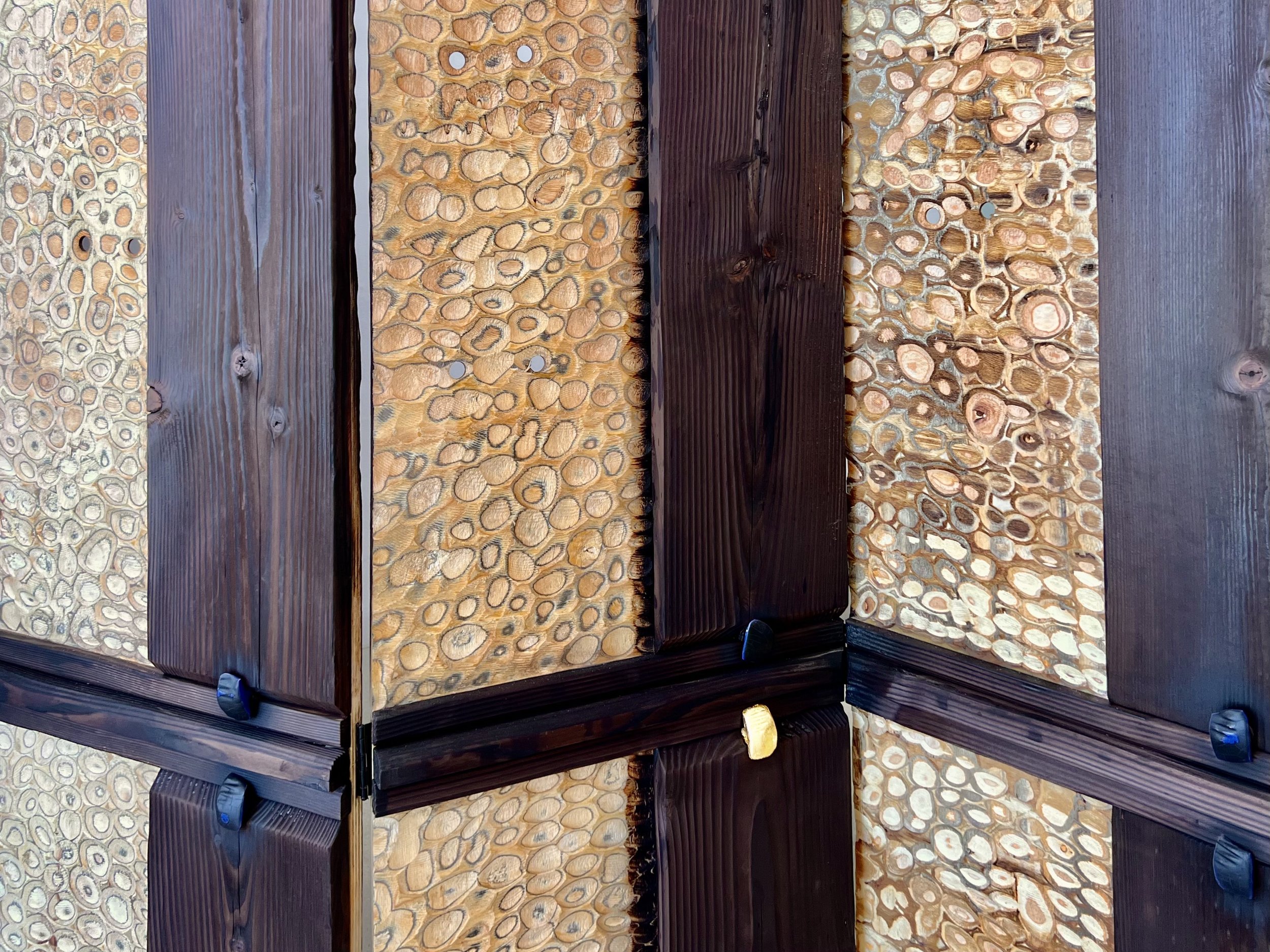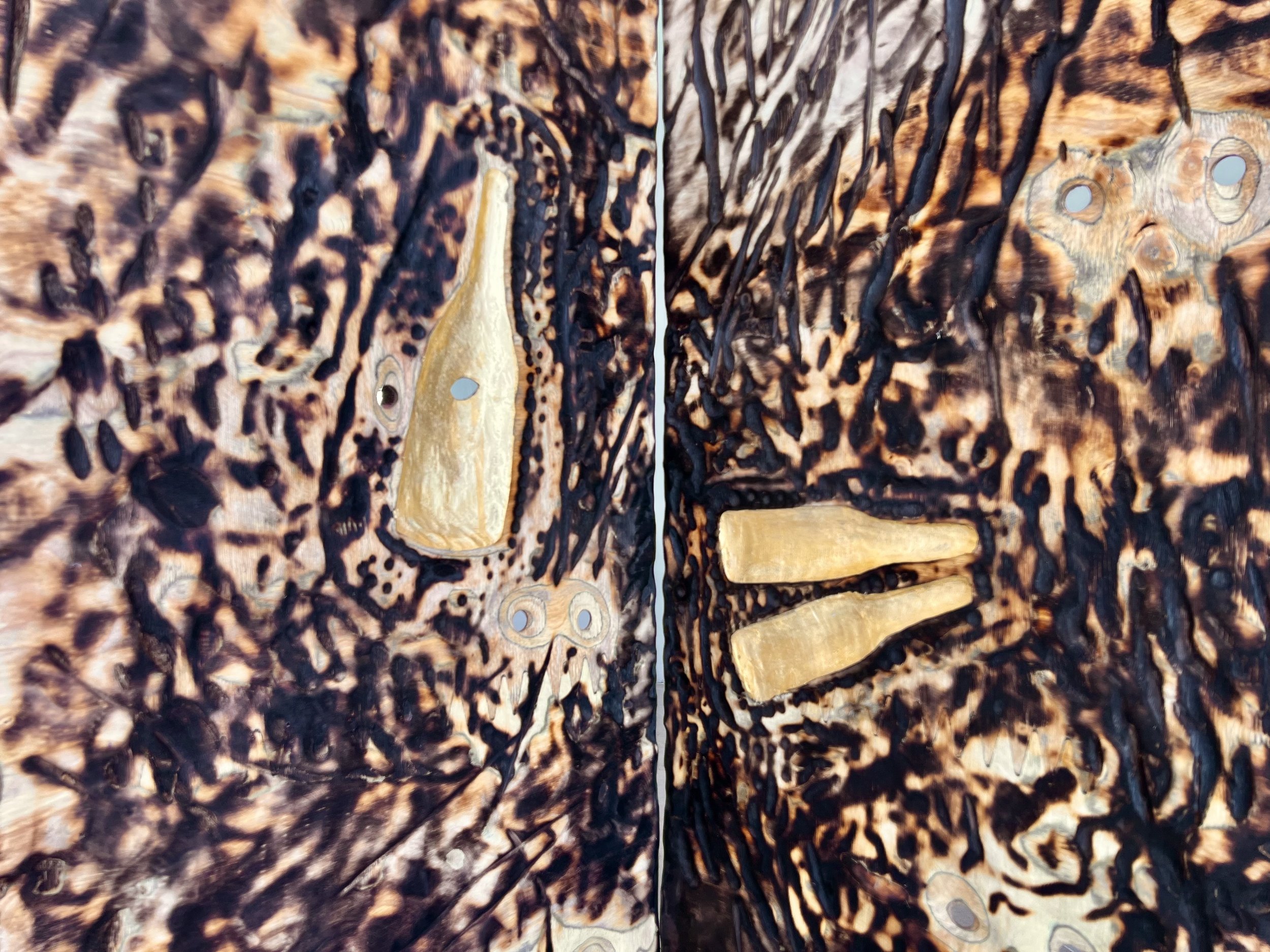Side of the Tracks, 2024
wood, ceramic, 24kgold
96 x 192 x 2 in (243.8 x 487.6 x 5 cm)
Side of the Tracks addresses the 20,000 migrants from Taishan, China, who were among the early Chinese settlers in the 1850s, including some of my ancestors who played pivotal roles in constructing the first Transcontinental Railroad following the Gold Rush. The genesis of this sculpture lies in the historic completion ceremony, where Leland Stanford was slated to drive the last solid gold spike. It draws inspiration from Andrew J. Russell’s photograph, the official image commemorating the railroad’s completion, a portrayal that conspicuously omitted the Chinese laborers, relegating them to obscurity.
The sculpture’s design is a nod to a cherished family artifact: a folding screen from my grandmother Daisy’s living room. Crafted from intricately carved wood, it depicts a phoenix perched atop a mythical rocky mountain, adorned in gold and black lacquer. This screen served as both a visual focal point and a repository of ancestral lore, often serving as the backdrop to our family gatherings.
Tracks intertwines elements of the railroad tracks from the Golden Spike Ceremony with cues from Russell’s photograph. Just as the photograph expunged the Chinese migrant workers, leaving only white figures, the sculpture spotlights this historical erasure. It centers on the three vessels performing a toast, and mirrors their pivotal presence in the iconic image while symbolically reclaiming the silenced narratives of the Chinese laborers who were instrumental in shaping American history.
